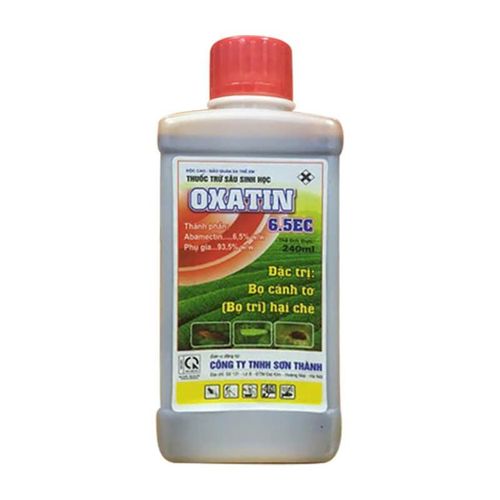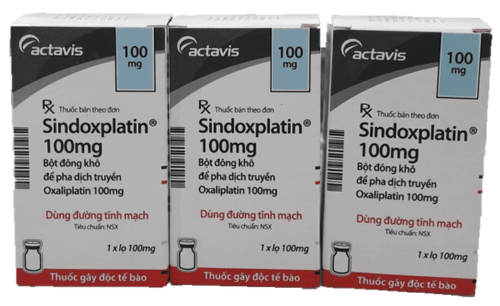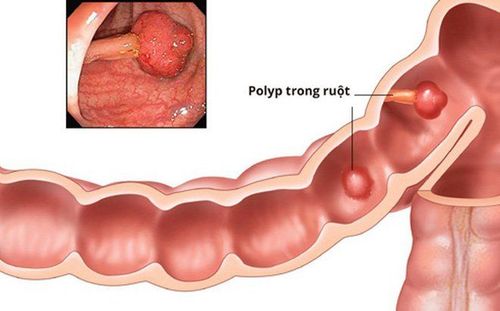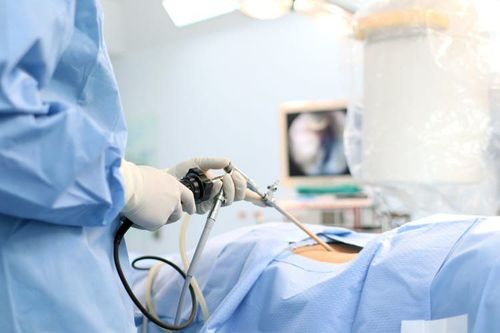This is an automatically translated article.
Endoscopic submucosal tomography may be indicated for people with early-stage esophageal cancer or precancerous manifestations. This technique has the advantage of being less invasive, highly effective in curing cancer, and has a fast recovery time.
1. Indications for endoscopic submucosal cutting of the gastrointestinal tract
Endoscopic submucosal tomography (ESD) is a technique used in the treatment of precancerous and early esophageal cancers, and many other gastrointestinal cancers.
Indications for endoscopic ESD for people with esophageal cancer include:
Absolute indication in the treatment of early cancer including T0 (high-grade dysplasia) and T1a stage localized to the epidermis and tissues associated, no more than two-thirds of the esophageal circumference Relatively indicated for the treatment of lesions extending to less than 200 μm of the submucosa, Endoscopic submucosal tomography (ESD) is a minimally invasive procedure and can be most effective in killing all precancerous cells and early esophageal cancer. Therefore, early screening for high-risk people is very important. In which, endoscopic techniques (magnified endoscopy, NBI narrowband endoscopy, etc.) are highly appreciated in early diagnosis of precancerous lesions and esophageal cancer.
Early esophageal cancer is diagnosed when the cancer cells are within the mucosal and submucosa layers, and have not invaded the muscle layer.
2. Advantages and disadvantages of ESD technique in the treatment of esophageal cancer
2.1. Advantage
The cure rate for pre-cancer and early-stage cancer is high, patients can return to normal activities without any further intervention. The esophagus is preserved
2.2. Defect
Belongs to the type of technique that is difficult to implement, with high requirements for meticulousness and accuracy
3. ESD endoscopic submucosal tomography procedure
Step 1: Prepare the patient by having the patient fast for 8 hours to clean the digestive tract, avoiding the risk of reflux of food and gastric juices into the esophagus. Step 2: Place an intravenous line for anesthesia or pre-anesthesia. Install a monitor to monitor during endoscopy. Step 3: Insert the endoscope into the esophagus, observe and mark around the site to be dissected. The marked position is about 1cm from the lesion boundary. Step 4: Inject into the submucosal layer a macromolecular solution to separate the submucosa from the muscle layer. The commonly used injection solution is physiological saline + hyaluronic acid + indigocarmin colorant. Step 5: Dissect the area that has been zoned and bring the removed tissue out of the body. Step 6: Check the areas at risk of bleeding after dissection and use heat pliers to stop the bleeding. Step 7: At the end of the procedure, move the patient to the postoperative room for resuscitation Step 8: Send the specimen to be sent for pathology

Thực hiện tiêm dưới niêm mạc trong quy trình cắt niêm mạc qua nội soi
4. Complications in endoscopic submucosal tomography
Some complications in endoscopic submucosal tomography are:
Esophageal perforation Bleeding Pneumomediastinal pneumothorax Pneumothorax or abdominal cavity Esophageal stricture Sore throat, nausea, vomiting Bloating, abdominal distension Endoscopic submucosal resection may be indicated for people with early-stage esophageal cancer or precancerous manifestations. Besides the advantages of being less invasive, this technique needs to be performed in reputable and specialized medical facilities because of its high and meticulous technical requirements.
Vinmec International General Hospital is a famous clinic with a team of well-trained doctors in early gastrointestinal cancer diagnosis and treatment. Vinmec is equipped with the most modern digestive endoscope system of Olympus, one of the best brands today, including machines being treated like the Olympus CLV 190 endoscope.
The advantage of endoscopes is that they have a narrow band of light (NBI), and NBI endoscopic images have high resolution and contrast, making it easier to detect, screen and diagnose gastrointestinal cancers. at an early stage. Accordingly, depending on the nature of the lesion, the patient will be prescribed mucosal resection (EMR) or submucosal dissection (ESD) through flexible bronchoscope without having to undergo surgery.
EMR
The principle of Endoscopic Mucosal Resection (EMR) is to lift the lesion above the underlying muscle layer so that the lesion can then be safely resected, this method is very useful in the treatment of early-stage cancerous lesions, sessile polyps, and dysplastic tumors.
This method has been conducted in Japan since 1980s specifically:
2 main techniques are suction - cutting, or lifting - cutting with injection under the NM. EMR historical criteria (JPCA): convex ≤2cm, flat or concave ≤1cm; cancer limited to mucosa Limits: Limited in size and location, incomplete resection, high recurrence ESD
This method has been applied in Japan since the 1990s and is now widely applied worldwide
The technical principle is to mark the lesion; submucosal injection, circumcision and submucosal dissection.
The advantages of this method are:
Removal of early cancerous lesions at any location, no size limitation. Enbloc cutting (whole array) evaluates the bottom and side sections; Prognosis and next treatment plan This is minimal intervention, improving the quality of life for patients. The survival time is not different with surgical method Expanded technique can treat submucosal tumors of the gastrointestinal tract (leiomyoma, carcinoid tumor, fat...) in patients without surgery Submucosalectomy. Endoscopic resection may be indicated for people with early-stage esophageal cancer or precancerous manifestations. This technique has the advantage of being less invasive, highly effective in curing cancer, and has a fast recovery time.
Along with a team of well-trained doctors in early gastrointestinal cancer diagnosis and treatment, Vinmec International General Hospital is equipped with the most modern gastrointestinal endoscopy system of Olympus, a One of the best manufacturers today, including those being treated like the Olympus CLV 190 endoscope.
The advantage of endoscopes is that they have a narrow light frequency band (NBI), and NBI endoscopic images have high resolution and contrast, making it easier to detect, screen and diagnose gastrointestinal cancer in early stage. Once the cancer is detected at an early stage, depending on the nature of the lesion, it will be cut by mucosal resection (EMR), or submucosal dissection (ESD) through flexible bronchoscopy, without having to undergo surgery.
Please dial HOTLINE for more information or register for an appointment HERE. Download MyVinmec app to make appointments faster and to manage your bookings easily.













